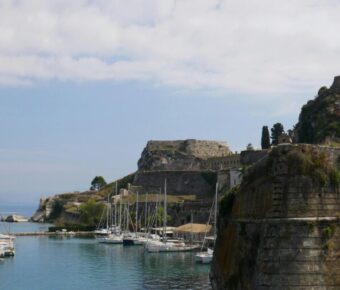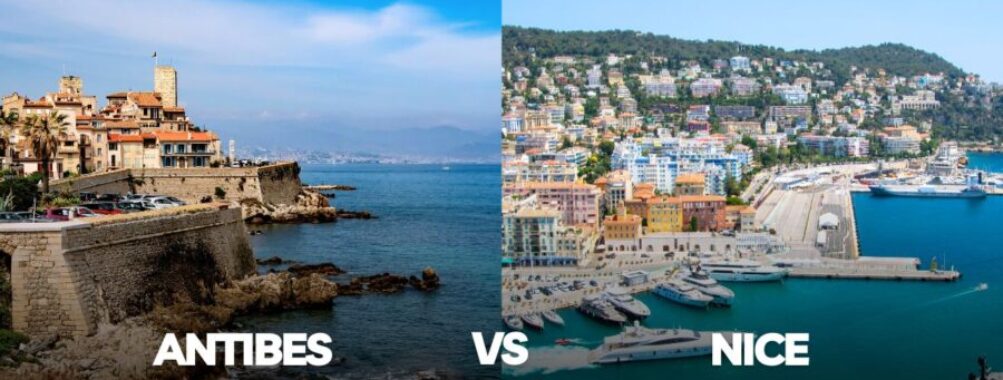
Antibes vs Nice: Which French Riviera Gem Offers the Ultimate Mediterranean Escape in 2025?
Planning a trip to the French Riviera? Travelers often struggle to choose between Antibes and Nice. These two gems of the Côte d’Azur offer very different experiences despite being just a short train ride apart.
Antibes provides sandy beaches and a more relaxed atmosphere than the busier city of Nice. While Nice boasts large smooth rocks called “galettes” on its shores, Antibes is known for its softer sandy beaches, which many travelers prefer. The quieter ambiance, especially in the mornings and evenings when daytrippers have departed, makes Antibes appealing for those seeking a more laid-back French Riviera experience.
As the region’s largest city, Nice offers more amenities and is a central hub for exploring the Côte d’Azur in all directions. Your choice ultimately depends on your vacation type – beach-focused relaxation might point you toward Antibes. At the same time, those wanting a livelier atmosphere with more transportation options might prefer Nice.
Table of Contents
- Geographical Overview and Accessibility
- Location on the French Riviera
- Accessibility by Public Transport
- Cultural and Historical Significance
- Old Town Charm and Historical Monuments
- Museums and Art
- Cultural Events and Festivals
- Accommodation and Stay Experiences
- Luxury Hotels and Resorts
- Budget-Friendly Options
- Unique Stay Experiences
- Culinary Delights and Dining Scenes
- High-End Restaurants and Local Cuisine
- Cafes and Bistros
- Markets and Local Products
- Beaches and Coastal Attractions
- Public Beaches and Secluded Coves
- Marinas and Port Areas
- Coastal Walks and Promenades
- Outdoor Activities and Excursions
- Cap d’Antibes and Juan-les-Pins Explorations
- Day Trips to Surrounding Towns
- Nature Trails and Parks
- Nightlife and Entertainment
- Lively Bars and Clubs
- Casinos and Evening Shows
- Night Markets and Street Performances
- Shopping and Fashion
- Boutique Stores and Designer Shops
- Souvenirs and Handcrafted Goods
- Comparative Analysis
- Antibes vs Nice: Lifestyle and Atmosphere
- Cost of Travel and Budget Considerations
- Best Time to Visit Each City
- Frequently Asked Questions
- What unique attractions does Antibes offer compared to Nice?
- How does the cultural vibe of Antibes differ from that of Nice?
- Can you recommend hidden gems in Antibes that aren’t as prominent in Nice?
- Which destination is preferred for a more authentic French Riviera experience, Antibes or Nice?
- What are the transportation options between Nice Airport and Antibes, and how do they affect travel plans?
- When planning an itinerary, how can you decide on the ideal length of stay in Antibes to fully appreciate its offerings?
- Book Your Dream Experience
- More Travel Guides
Geographical Overview and Accessibility
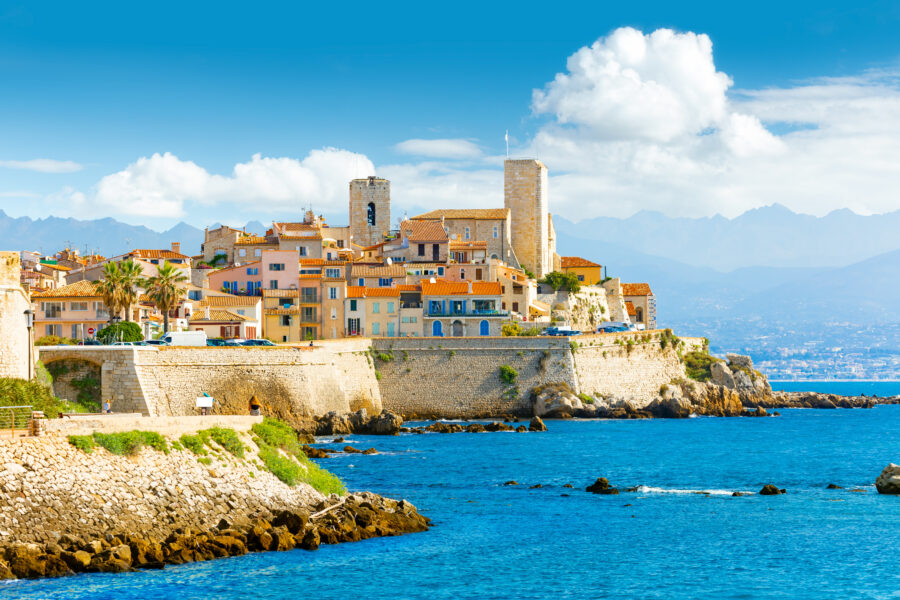
Antibes and Nice are jewels of the French Riviera with distinct geographical characteristics shaping the visitor experience. Their locations and transport options significantly influence travelers’ exploration of the Côte d’Azur region.
Location on the French Riviera
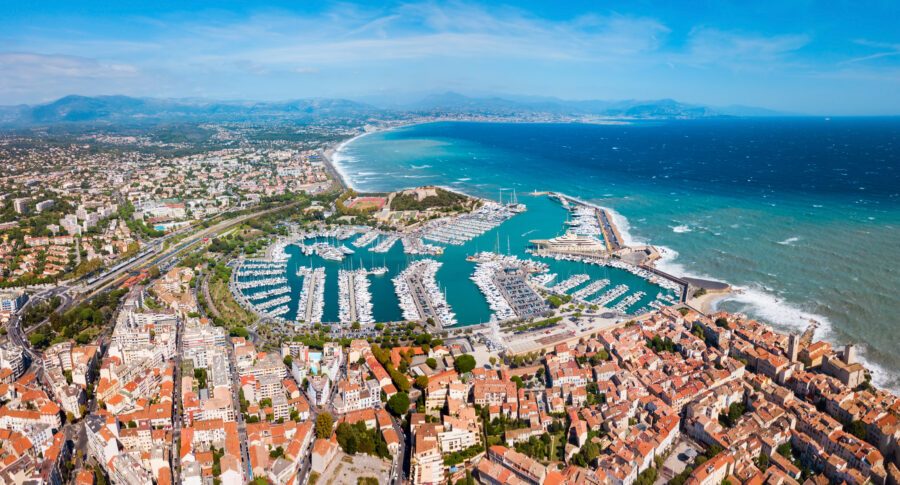
Antibes sits about 20 kilometers southwest of Nice, creating a more intimate setting along the Mediterranean coast. The town occupies a peninsula that juts into the sea, with Juan-les-Pins on its western side. This geography gives Antibes its charming harbor and natural protection from winds.
Nice, the region’s largest city, extends more extensively along the coastline. The famous Promenade des Anglais stretches 7 kilometers along the Bay of Angels. The city is backed up against hills that provide gorgeous panoramic views of the Mediterranean.
The distance between these two destinations means travelers can easily visit both during a Côte d’Azur trip. Many travelers search for flights to Nice as their entry point to the region.
Accessibility by Public Transport
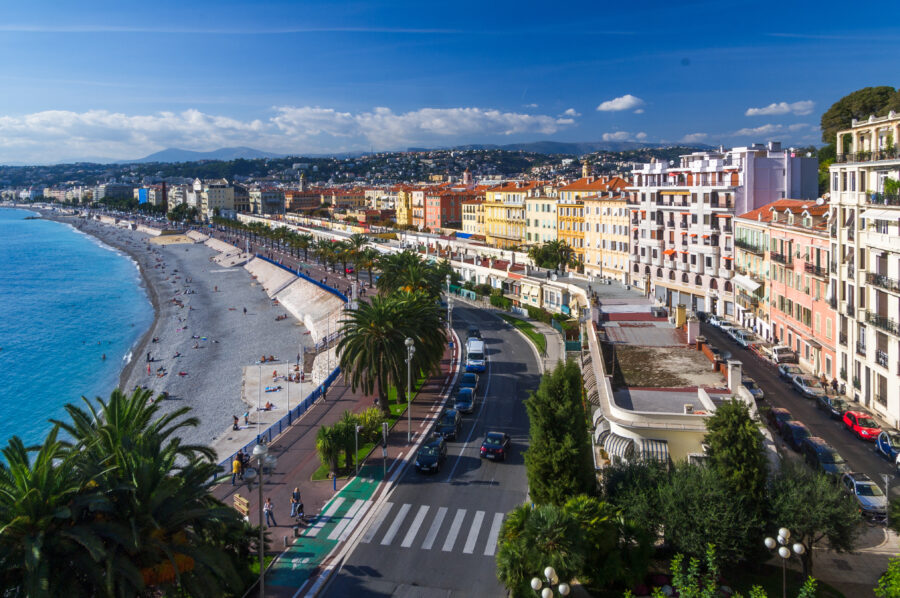
Nice boasts superior transport connections, including an international airport serving as the French Riviera’s main gateway. The city’s efficient tram system makes getting around simple, with lines connecting the airport, town center, and major attractions.
Antibes has fewer direct international connections but remains easily accessible. The train station in Antibes offers regular service along the coastal railway, with trips to Nice taking approximately 20 minutes.
Bus connections between the two cities run frequently throughout the day. The coastal bus routes provide scenic views while traveling between destinations. For those staying in Nice, day trips to Antibes are straightforward without needing a rental car.
Local buses within each city complement the regional transport options, though Nice’s more developed public transport network makes it slightly more convenient for visitors without cars.
Cultural and Historical Significance
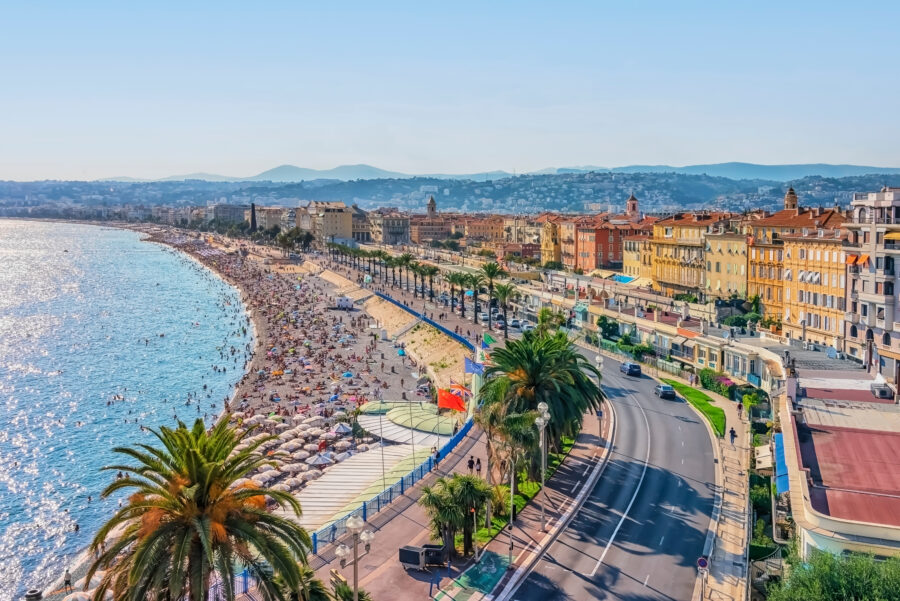
Antibes and Nice boast rich historical backgrounds that have shaped their unique cultural identities. From ancient fortifications to world-class museums, these French Riviera gems offer visitors a chance to immerse themselves in centuries of Mediterranean heritage.
Old Town Charm and Historical Monuments
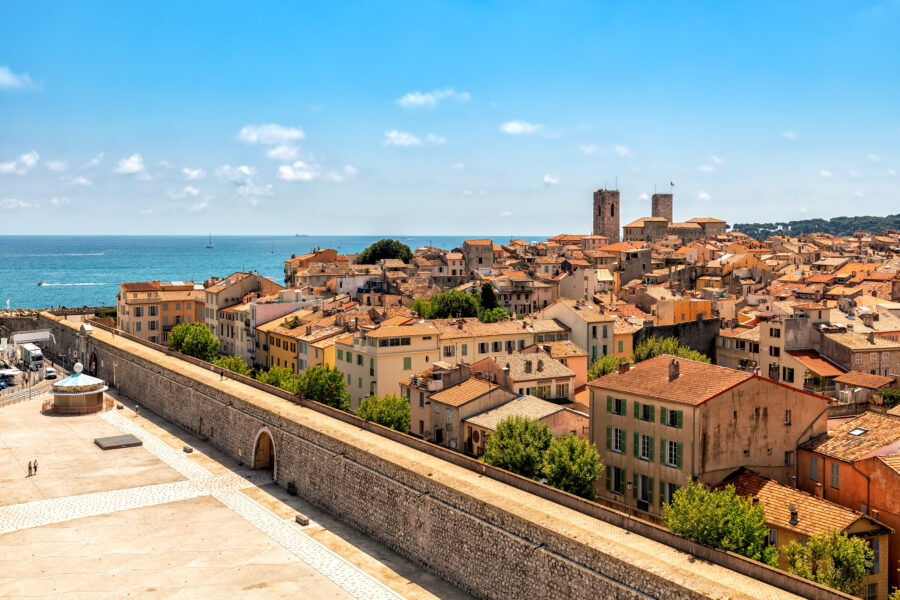
Antibes’ Old Town (Vieil Antibes) enchants visitors with its narrow cobblestone streets and 16th-century ramparts, which once protected the city from invaders. The star-shaped Fort Carré, built in the 16th century, is an impressive military structure with panoramic coastline views. This fortress even briefly imprisoned Napoleon Bonaparte in 1794!
Nice’s Old Town (Vieux Nice) offers a different historical flavor with its Italian-influenced architecture – a reminder that Nice only became French in 1860. The winding alleyways open to charming squares like Place Rossetti, where locals gather around the magnificent Baroque cathedral.
Both Old Towns preserve their medieval layouts, but Antibes feels more intimate and less crowded than Nice’s bustling historic center, especially during peak tourist season.
Museums and Art
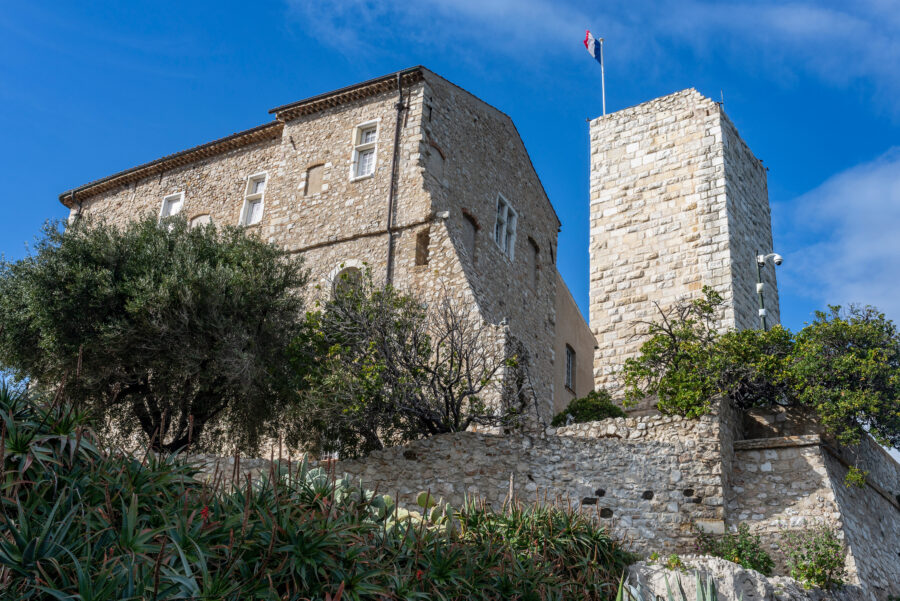
Antibes proudly houses the Picasso Museum within the ancient Château Grimaldi. Pablo Picasso worked here in 1946, leaving behind 23 paintings and 44 drawings, forming this remarkable collection’s core. The museum overlooks the sea, providing the same inspiring views that captivated the legendary artist.
Lovely counters with several outstanding museums, including the Matisse Museum and the Marc Chagall National Museum. The city’s artistic heritage runs deep – Henri Matisse lived in Nice for over 40 years, drawn by its legendary light that has attracted painters for centuries.
Art enthusiasts might find Nice’s broader range of museums more satisfying, while those seeking focused artistic experiences may prefer Antibes’ more intimate connection to Picasso’s legacy.
Cultural Events and Festivals
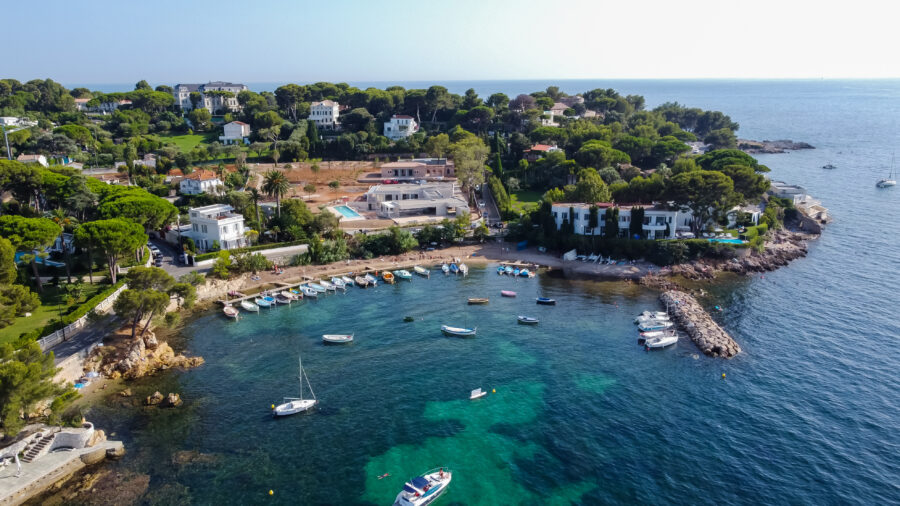
Nice hosts the world-famous Nice Carnival every February, a tradition dating back to the Middle Ages. The city also presents the renowned Nice Jazz Festival, one of the oldest jazz festivals in Europe, attracting international performers and thousands of visitors annually.
Antibes has unique cultural offerings, such as the Antibes Yacht Show and the Juan-les-Pins Jazz Festival (Jazz à Juan), established in 1960. These events celebrate the town’s maritime heritage and musical traditions.
While Nice’s festivals tend to be larger and more internationally recognized, Antibes’ events often feel more authentic and less commercialized. Many travelers appreciate the relaxed atmosphere of Antibes’ cultural gatherings compared to the sometimes overwhelming scale of Nice’s celebrations.
See Related: Marseille vs Nice: Epic French Riviera Derby Showdown in Crucial European Race
Accommodation and Stay Experiences
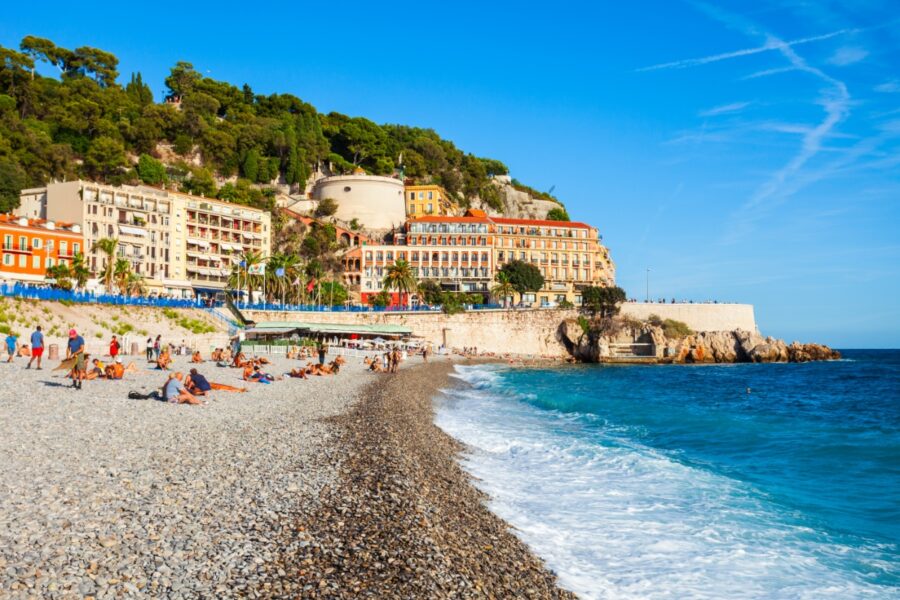
Where you stay can make or break your French Riviera vacation. Antibes and Nice offer diverse accommodation options catering to different preferences and budgets.
Luxury Hotels and Resorts
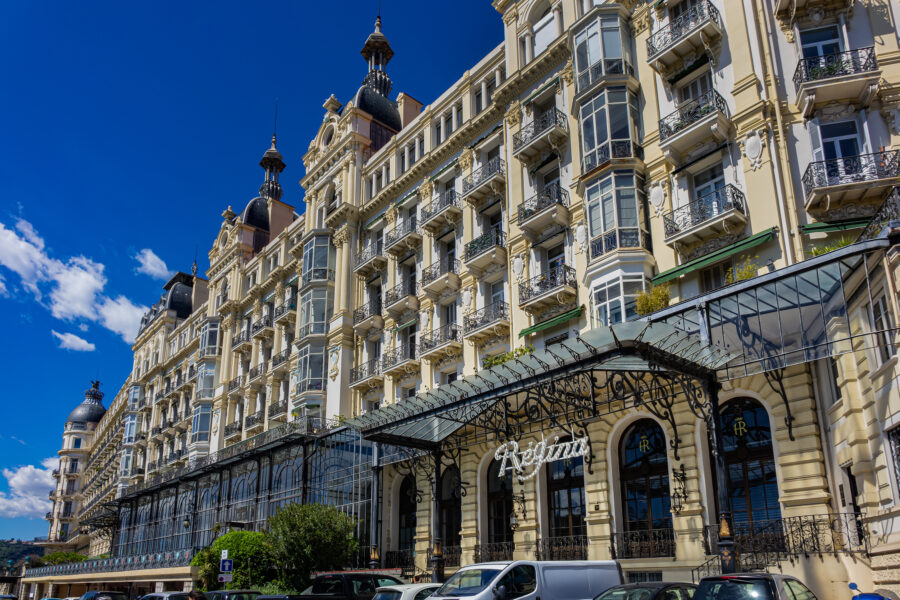
Nice boasts some of the most iconic luxury accommodations on the French Riviera. The legendary Hotel Negresco is a historic landmark on the Promenade des Anglais, offering Belle Époque grandeur and museum-quality art throughout its premises.
Antibes counters with the famously exclusive Hotel du Cap-Eden-Roc, perched on the tip of Cap d’Antibes. This seaside retreat has welcomed celebrities and royalty for decades.
Both cities feature luxurious boutique hotels tucked away in their old towns. Nice’s luxury properties typically offer dramatic sea views, while Antibes’ high-end accommodations tend to provide a more intimate atmosphere with smaller properties and personalized service.
The five-star establishments in both destinations feature spas, fine dining restaurants, and premium concierge services that can arrange yacht charters and exclusive tours.
Budget-Friendly Options
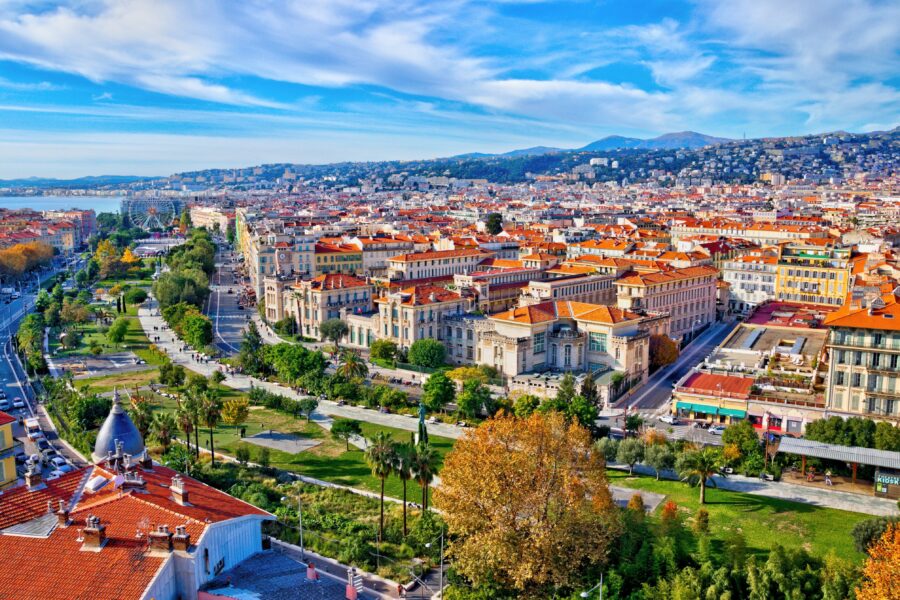
Travelers looking at their wallets will find that Nice offers more variety in budget accommodations. The city has numerous mid-range hotels, family-run guesthouses, and hostels throughout its neighborhoods. Areas slightly inland from the Promenade des Anglais often provide the best value.
Antibes has fewer budget options but compensates with charm. Small hotels and B&Bs in Antibes’ old town allow visitors to experience the authentic atmosphere without breaking the bank.
Both destinations offer significant discounts during shoulder seasons (April-May and September-October). Many properties in Antibes close during the winter months, while Nice remains operational year-round.
Self-catering apartments are plentiful in both cities and represent excellent value for longer stays or families. Many visitors find renting apartments more economical than hotels.
Unique Stay Experiences
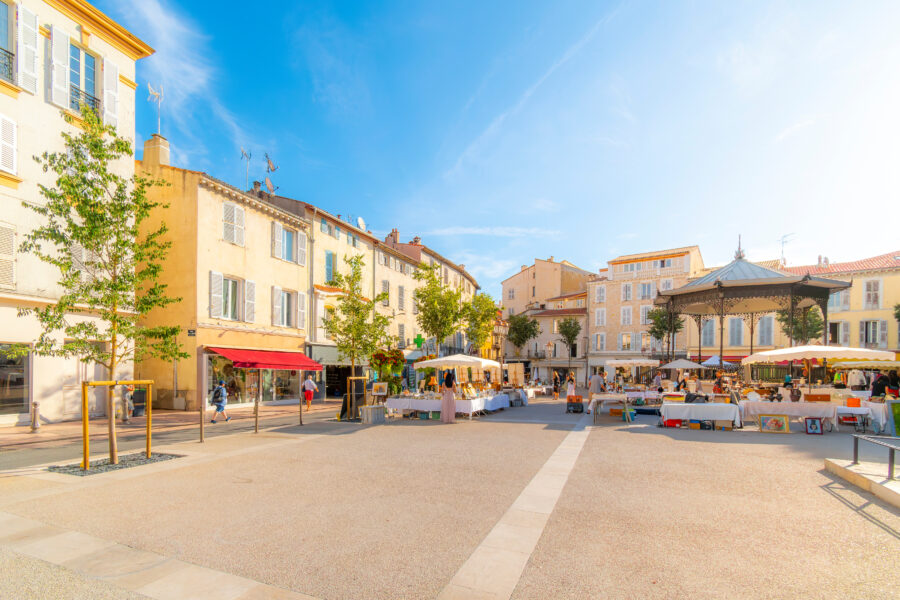
Both cities deliver distinctive options for memorable accommodations beyond standard hotels. In Antibes, visitors can book renovated fishermen’s cottages in the old town or stay in converted lighthouses along the coast.
Nice offers belle époque villas transformed into boutique guesthouses, particularly in the elegant Cimiez neighborhood. Some feature original architectural details and gardens that transport guests to another era.
Boat enthusiasts might appreciate staying aboard a yacht in Antibes’ famous Port Vauban, Europe’s largest yacht marina. Several companies offer “floating hotel” experiences ranging from modest sailboats to luxury vessels.
Farm stays in the hills behind both cities provide a rural contrast to coastal accommodations. These agriturismo-style properties often include access to organic gardens and home-cooked meals featuring local ingredients.
For solo travelers or digital nomads, Nice has seen a rise in co-living spaces and modern hostels with shared workspaces and community events.
Culinary Delights and Dining Scenes
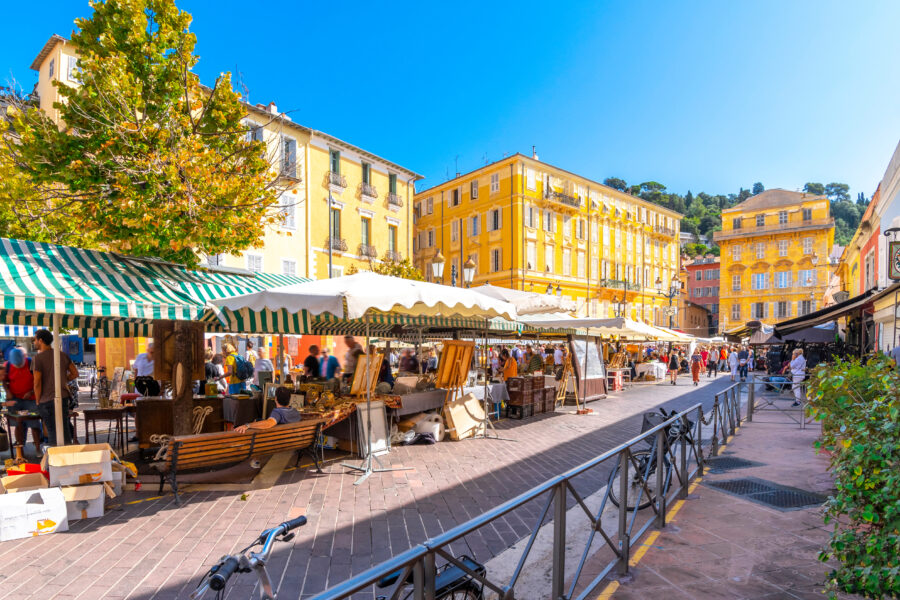
Both Antibes and Nice offer incredible food experiences showcasing the best Mediterranean cuisine. The French Riviera is famous for its fresh seafood, local produce, and traditional Provençal dishes that reflect the region’s rich culinary heritage.
High-End Restaurants and Local Cuisine
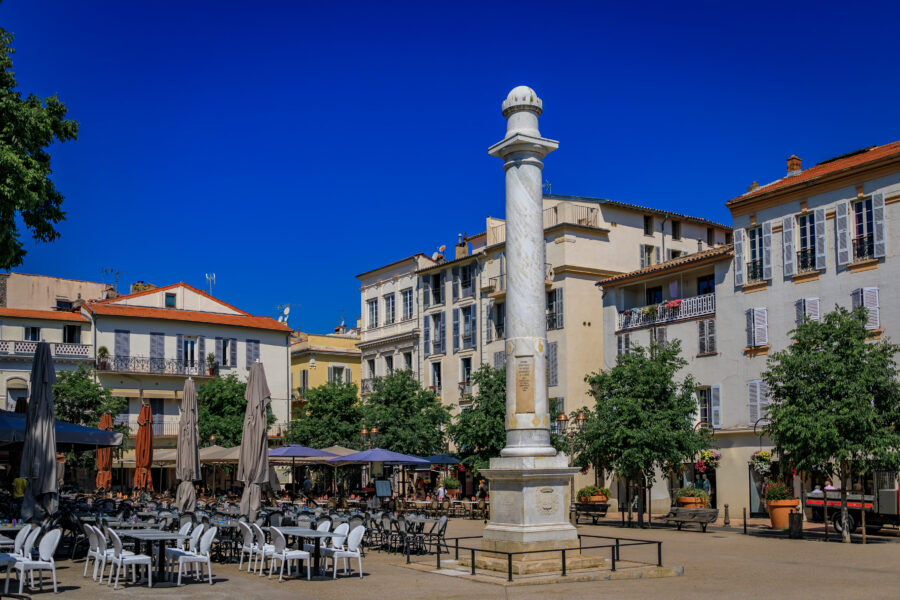
Antibes has earned a reputation for authentic dining experiences without the tourist traps often found in larger cities. The old town features charming restaurants serving traditional Provençal dishes like bouillabaisse, ratatouille, and socca. Many establishments source ingredients directly from local markets, ensuring freshness and supporting local producers.
Nice’s restaurant scene tends to be more diverse and cosmopolitan, offering everything from traditional Niçoise cuisine to international options. The city’s signature dish, Salade Niçoise, originated here and is a must-try. However, travelers should be cautious of tourist-oriented establishments, especially along the Promenade des Anglais.
Both cities have excellent seafood restaurants, but Antibes’ port-side eateries often offer fresher catches at more reasonable prices. Many local chefs in Antibes pride themselves on simple preparations that highlight the quality of ingredients.
Cafes and Bistros
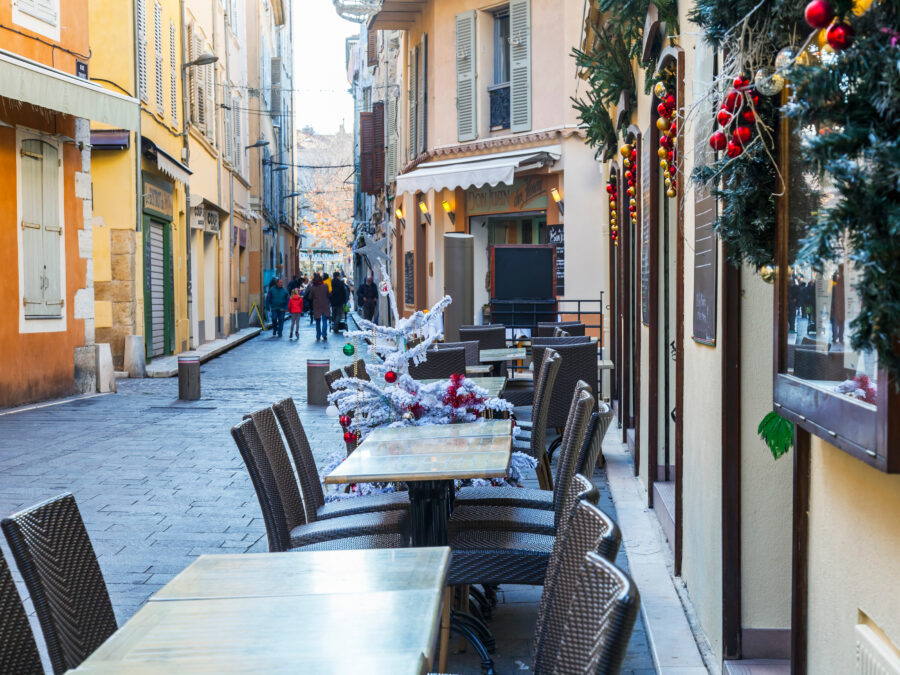
Antibes’ café culture feels more relaxed and authentic than Nice’s. Small family-run bistros dot the narrow streets, offering reasonably priced coffee and pastries. These cozy spots are perfect for people-watching or enjoying a leisurely breakfast.
Nice has a more bustling café scene with historic establishments and modern coffee shops. Places like Café de Turin have been serving locals for generations. Morning coffee culture is strong here, with many Niçois enjoying an espresso and pan bagnat (a local sandwich with tuna, vegetables, and olive oil).
Both cities excel at outdoor dining, but Antibes’ cafes tend to be less crowded. Charming terraces tucked away in quiet squares allow you to savor a glass of rosé and a simple meal without feeling rushed.
Markets and Local Products
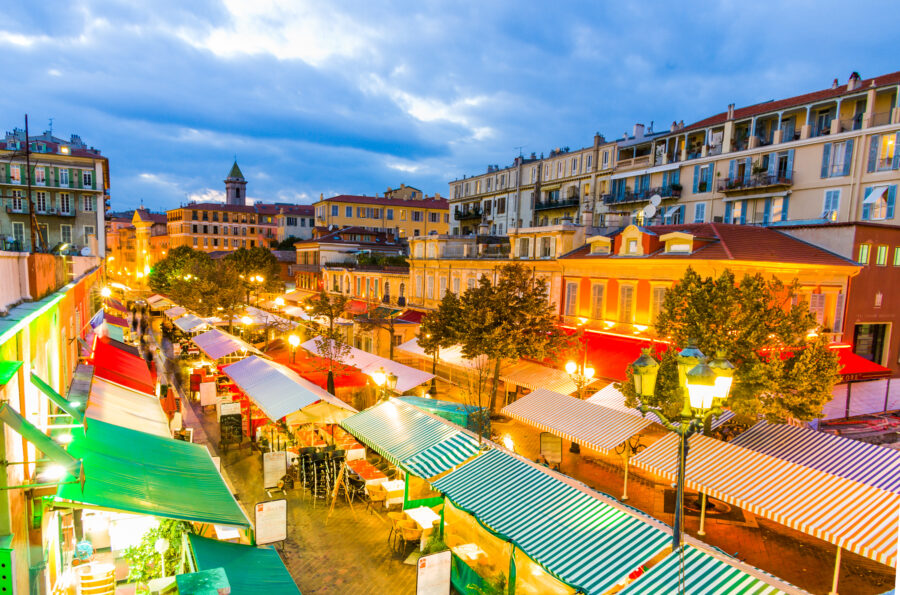
The Marché Provençal in Antibes is a sensory delight that showcases the region’s bounty. It is open daily (except Mondays in winter) and features colorful stands selling fresh fruits, vegetables, cheese, olives, and flowers. Local specialties like tapenade, aioli, and candied fruits make perfect souvenirs.
Nice’s famous Cours Saleya market is larger and more touristy but offers an impressive selection of regional products. The flower market is particularly spectacular, filling the air with intoxicating scents. On Mondays, it transforms into an antique market.
Both cities have specialty shops worth exploring. Look for olive oil producers, wine merchants, and small bakeries making pain d’épices (spice bread) and pissaladière (onion tart). The markets in Antibes tend to cater more to locals with authentic prices, while Nice’s markets have adapted somewhat to tourism.
See Related: Most Breathtaking Places to Visit in the World (Travel Guide)
Beaches and Coastal Attractions
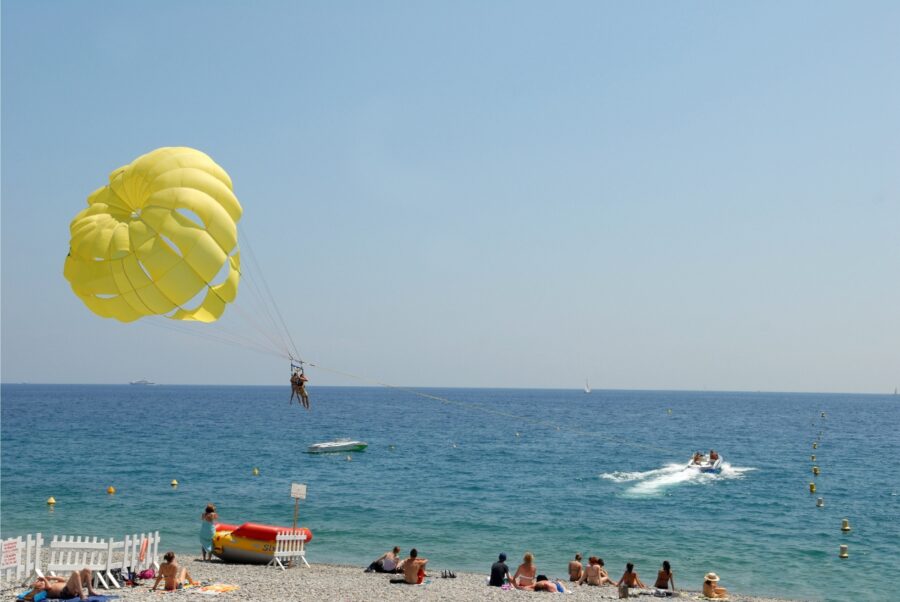
The French Riviera coastlines of Antibes and Nice offer distinctly different beach experiences. Antibes boasts fine sandy beaches, while Nice is known for its signature pebble beaches called “galets.” Both cities provide stunning Mediterranean views, but with different coastal atmospheres.
Public Beaches and Secluded Coves
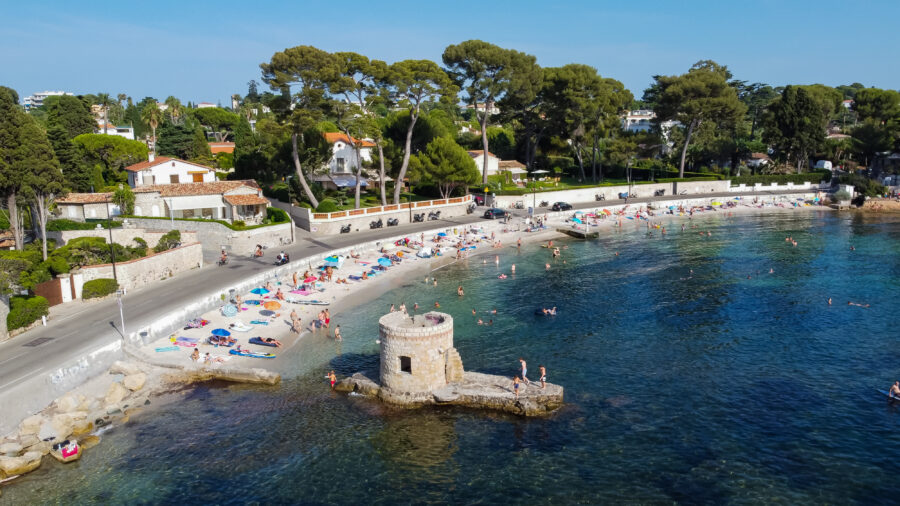
Antibes has a clear advantage when it comes to sandy beaches. The public beaches here are generally more comfortable for sunbathing and easier on the feet than Nice’s pebble shores. Plage de la Gravette, located near the old town, is a popular sandy beach perfect for families.
The Cap d’Antibes peninsula offers secluded coves like Plage des Ondes for those seeking more privacy. This hidden gem provides crystal-clear waters and spectacular views of the coastline.
Nice’s pebbly beaches are charming. The main public beach stretches along the famous Promenade des Anglais and gets crowded during summer.
Some beaches in Nice offer chair rentals with comfortable mattresses that solve the pebble problem, but these private sections come with a fee.
Marinas and Port Areas
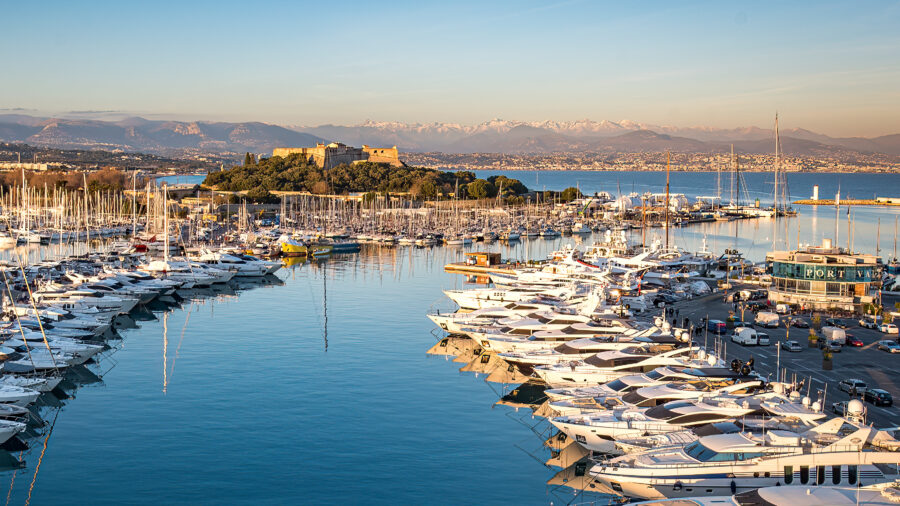
Port Vauban in Antibes is Europe’s largest yacht marina and a fascinating place to stroll. The harbor showcases an impressive collection of luxury yachts, including “Billionaires’ Quay,” where some of the world’s largest private vessels dock. The port area has a relaxed atmosphere with local fishermen selling their catch alongside multimillion-dollar boats.
Nice’s port is smaller but equally charming, with colorful fishing boats and pleasure craft. The area around Port Lympia has been revitalized with trendy restaurants and cafes. Both ports offer boat excursions and water activities, but Antibes tends to have more sailing options due to its larger marina facilities.
Coastal Walks and Promenades
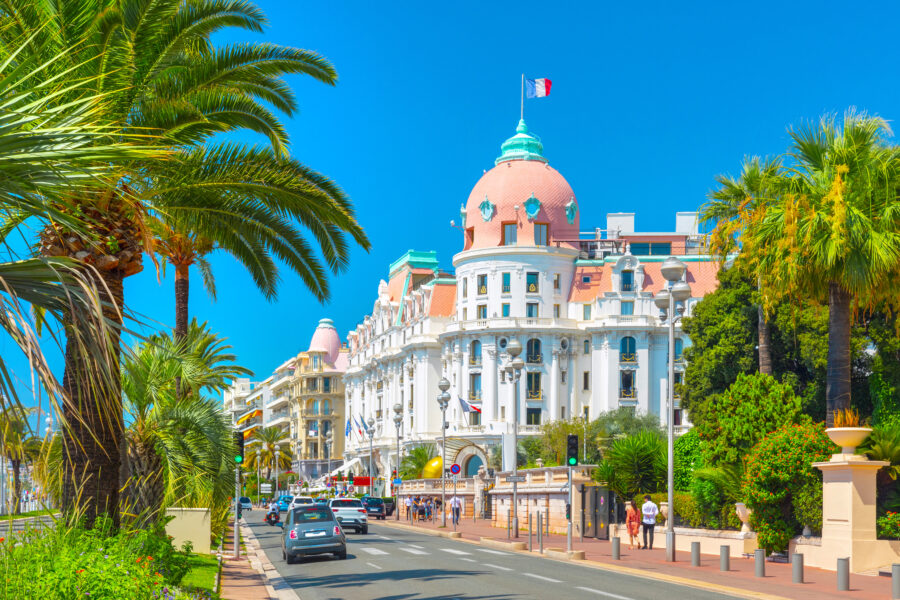
Nice’s Promenade des Anglais is world-famous for good reason. This 7km walkway follows the curved bay with palm trees, blue benches, and continuous views of the Mediterranean. It’s perfect for jogging, cycling, or evening strolls.
Antibes offers the stunning Sentier du Littoral (coastal path) around Cap d’Antibes. This moderately challenging trail takes hikers through fragrant pine forests, past magnificent villas, and to breathtaking viewpoints.
The Ramparts Walk in Antibes’ old town provides another perspective, with elevated views of the sea and the snow-capped Alps in the distance. Both cities beautifully maintain these coastal paths, but Antibes’ walks feel natural and less crowded than Nice’s busy promenade.
Outdoor Activities and Excursions
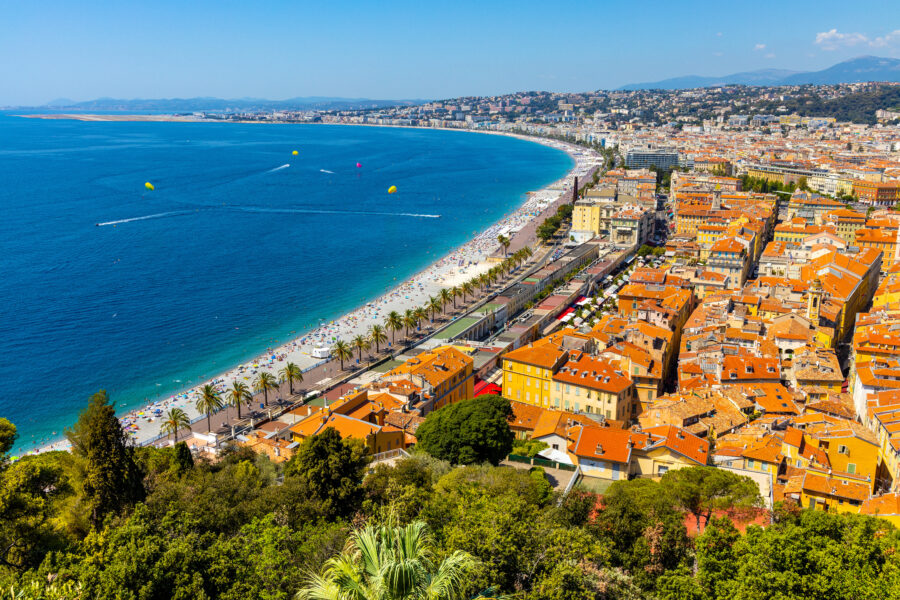
Both Antibes and Nice offer amazing outdoor adventures along the French Riviera. Visitors can explore scenic coastal paths, enjoy guided tours, and discover natural beauty in both locations.
Cap d’Antibes and Juan-les-Pins Explorations
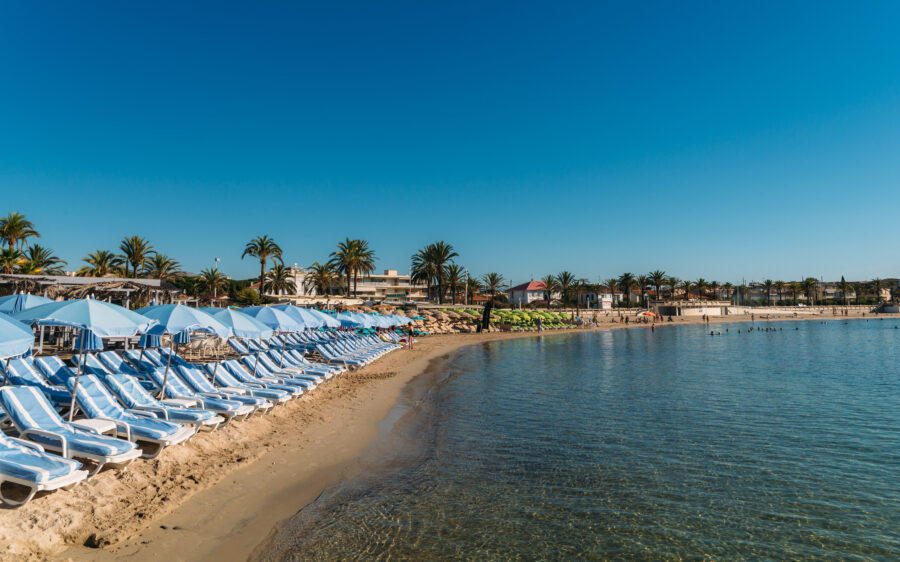
The stunning Cap d’Antibes peninsula provides some of the most breathtaking coastal walks in the region. The famous Sentier du Littoral trail takes you along rugged cliffs and past luxurious villas with spectacular Mediterranean views. Pack good shoes and water – parts of the path can be challenging, but worth it!
Juan-les-Pins offers a different vibe with its lively beaches and pine-covered headlands. Water sports enthusiasts can try paddleboarding or kayaking along the coastline. The clear blue waters make snorkeling particularly rewarding here.
Sunset cruises departing from Antibes Port provide unforgettable views of the coastline. These boat excursions showcase the stunning mansions and natural beauty of the peninsula from a unique perspective.
Day Trips to Surrounding Towns
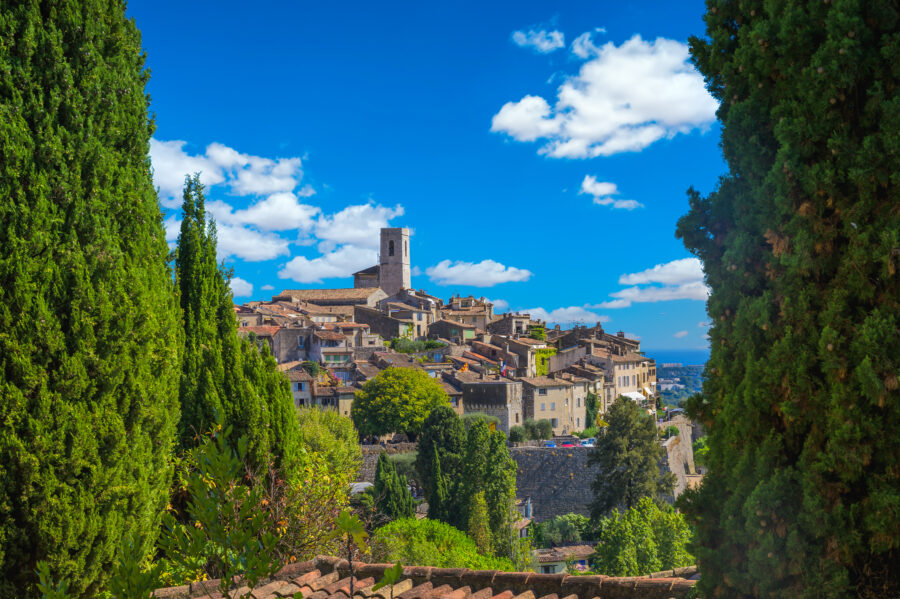
Antibes makes an excellent base for exploring charming nearby villages. The medieval town of St Paul de Vence, perched on a hilltop, is just 30 minutes away by car. Its cobbled streets, art galleries, and panoramic views attract visitors year-round.
With its famous casino and royal palace, Monaco makes for an exciting day trip. The principality’s glamorous atmosphere starkly contrasts with Antibes’ more relaxed vibe.
The picture-perfect village of Eze deserves special mention. This eagle’s nest village clings to a rocky peak with extraordinary coast views. Its exotic garden and narrow medieval streets create a magical atmosphere that feels worlds away from the bustling coast below.
Near the Italian border, Menton charms visitors with its colorful buildings and lemon groves. Guided tours often include multiple towns in one day.
Nature Trails and Parks
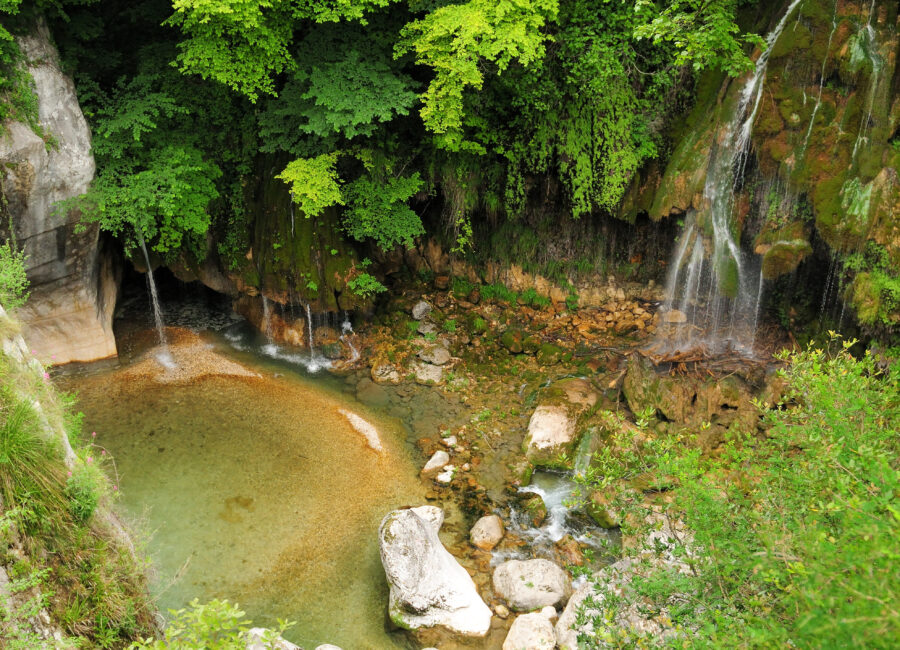
Parc Exflora in Antibes offers a peaceful retreat with manicured gardens and Roman-inspired features. It’s perfect for a morning stroll or afternoon picnic away from the crowded beaches.
The Marineland marine park combines entertainment with educational experiences about marine life. While technically an attraction rather than a natural space, it provides outdoorsy fun for families.
For serious hikers, the nearby pre-Alps offer challenging trails with rewarding views. Just a short drive from Antibes, the Gorges du Loup area features dramatic landscapes with waterfalls and rugged terrain.
Vence, slightly inland, provides access to mountain trails that tourists visit less. The natural beauty here offers a welcome change from coastal activities and reveals another side of the region’s diverse landscape.
Nightlife and Entertainment
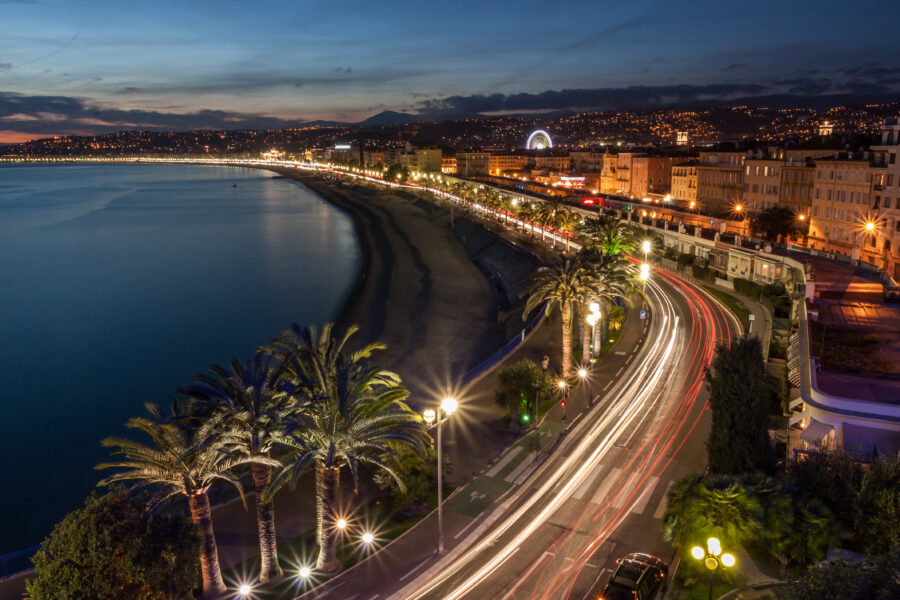
When choosing between Antibes and Nice, your evening options differ significantly. Nice offers a more vibrant nightlife scene with greater variety, while Antibes provides a quieter, more intimate atmosphere with its unique charm.
Lively Bars and Clubs
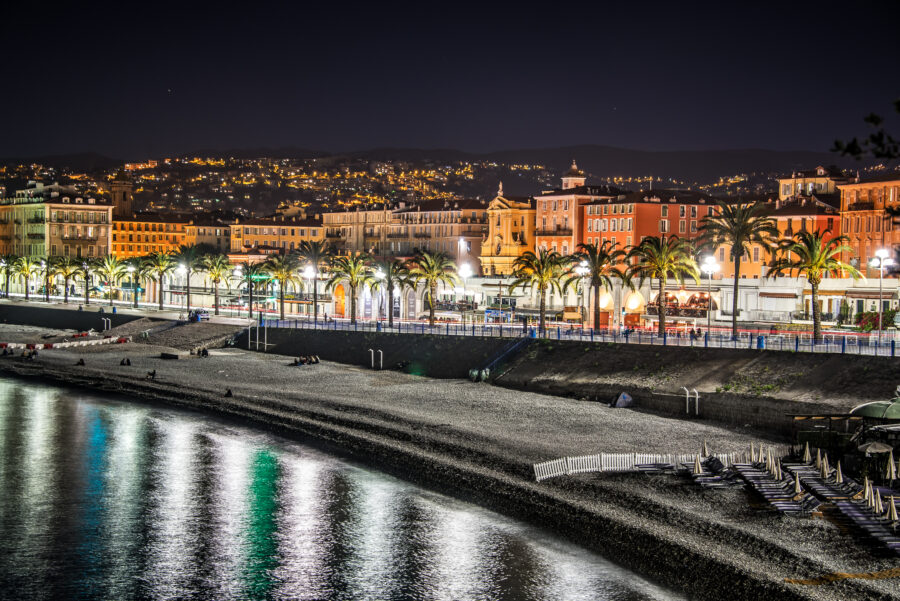
Nice dominates when it comes to nightlife diversity. The city boasts a thriving bar scene with live music venues featuring various genres almost every night of the week. From sophisticated cocktail lounges along Promenade des Anglais to energetic clubs in the Old Town, Nice caters to all tastes.
Antibes offers a more laid-back experience with charming wine bars and casual pubs in its historic center. Juan-les-Pins (part of Antibes) comes alive in summer with beachfront bars and a handful of clubs for those seeking more excitement.
The atmosphere in Nice tends to be more cosmopolitan and international, while Antibes maintains a distinctly local feel. Nice’s nightlife districts stay busy until early morning, especially during peak tourist season, whereas Antibes quiets earlier.
Casinos and Evening Shows

The casino scene along the French Riviera provides elegant evening entertainment options. Nice features, Casino Ruhl on the Promenade des Anglais, offering slot machines, table games, and occasional live performances in an elegant setting.
While Antibes doesn’t have its major casino, it’s just a short drive from the legendary Casino de Monte-Carlo in Monaco. This world-famous gambling destination offers an unforgettable experience with its ornate Belle Époque architecture and high-stakes games.
For evening shows, Nice presents more options with its opera house, theaters, and larger venues hosting concerts and performances. Antibes compensates with intimate jazz clubs and seasonal festivals that showcase local and international talent.
Night Markets and Street Performances
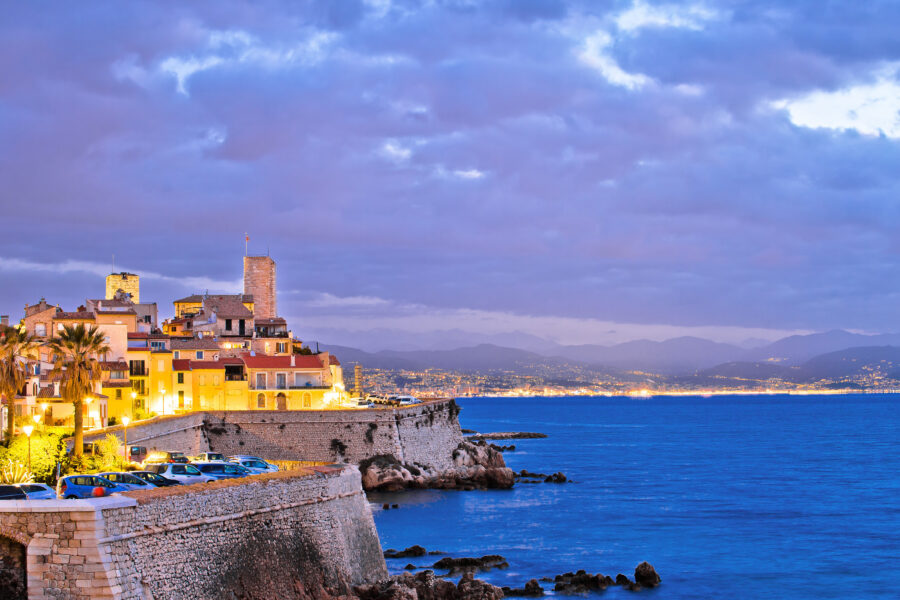
Summer evenings in both cities come alive with outdoor activities. Nice’s Cours Saleya transforms into a vibrant night market several evenings per week, with local artisans selling crafts, jewelry, and unique souvenirs under twinkling lights.
Antibes offers charming evening markets along its ramparts, particularly during summer. The atmosphere feels more intimate than Nice’s larger affairs. Street performers charm both cities, with musicians, artists, and entertainers lining pedestrian areas.
Nice attracts more elaborate performances, including fire dancers and acrobats, especially along the Promenade du Paillon. Antibes’ street entertainment maintains a more traditional Mediterranean feel with classical guitarists and local musicians performing regional music.
Shopping and Fashion
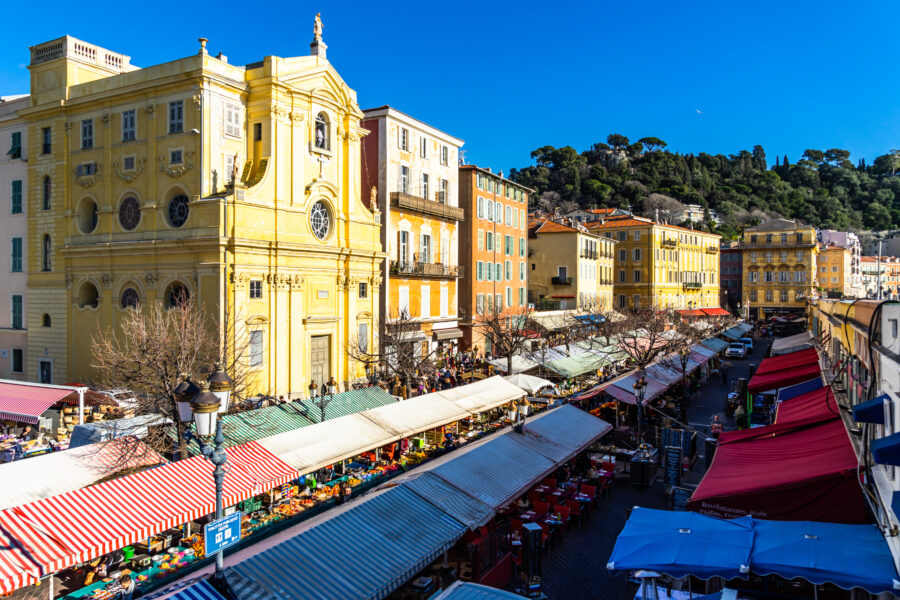
Both Antibes and Nice offer unique shopping experiences with their distinct flavors. Nice provides more variety with larger commercial zones, while Antibes charms visitors with its artisanal boutiques and intimate shopping atmosphere.
Boutique Stores and Designer Shops
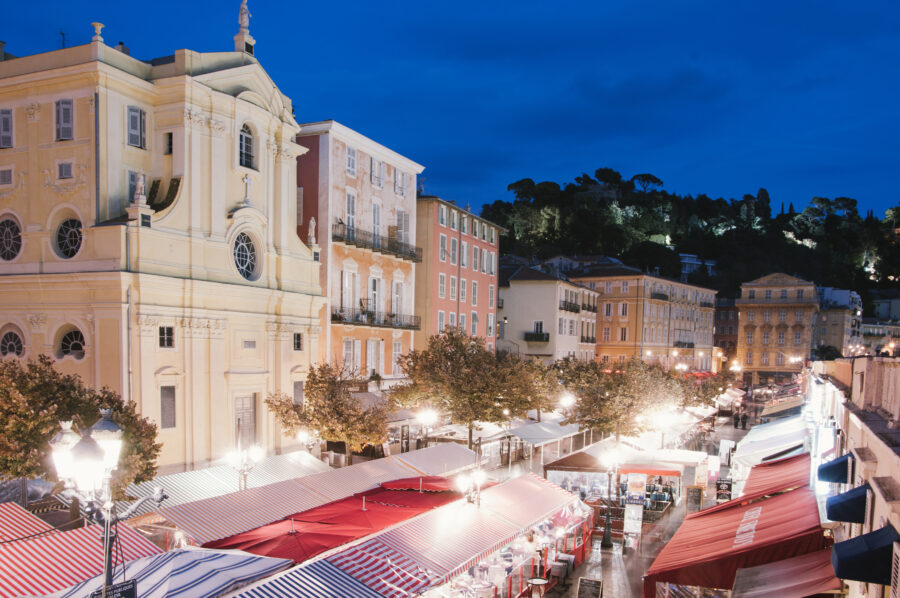
Nice is a leader in designer shopping and upscale boutiques—the famous Promenade des Anglais and Avenue Jean Médecin feature international luxury brands that attract fashion-conscious visitors worldwide. Antibes offers a more intimate shopping experience.
The narrow streets of Old Antibes are lined with charming boutiques selling everything from designer clothing to unique accessories. You’ll find locally owned shops with curated collections you won’t see in department stores.
For luxury shopping in Antibes, head to the Port Vauban area where upscale boutiques cater to the yacht-owning clientele. The selection might be smaller than Nice, but the personalized service and unique finds make it worthwhile.
Souvenirs and Handcrafted Goods
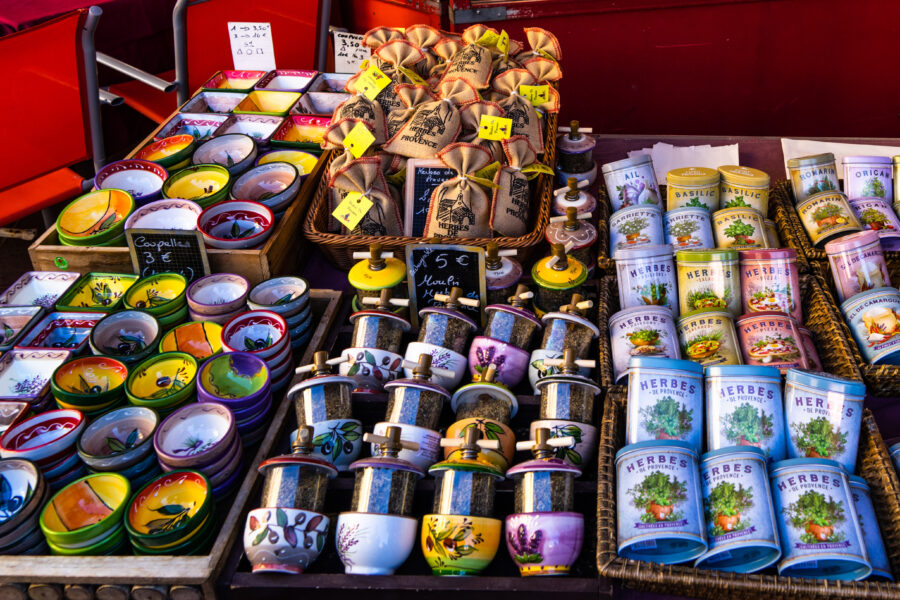
Antibes truly shines when it comes to artisanal goods and unique souvenirs. The Marché Provençal (Provençal Market) is a must-visit spot where local artisans sell handcrafted jewelry, soaps, and textiles. This daily market (except Mondays in winter) showcases authentic French Riviera craftsmanship.
Nice offers the Cours Saleya market, which is larger and bustling with activity. Here you’ll find everything from lavender products to olive wood kitchenware. The selection tends to be more tourist-oriented but still offers quality goods.
What sets Antibes apart is the concentration of artist workshops in the old town. Many craftspeople create and sell directly from their studios, and you can often watch them work and purchase truly one-of-a-kind pieces. For affordable souvenirs in both cities, look for locally-made items like herbs de Provence, olive oils, and handmade soaps that capture the essence of the French Riviera.
See Related: Paris vs Nice: Which French City Offers the Better Experience?
Comparative Analysis
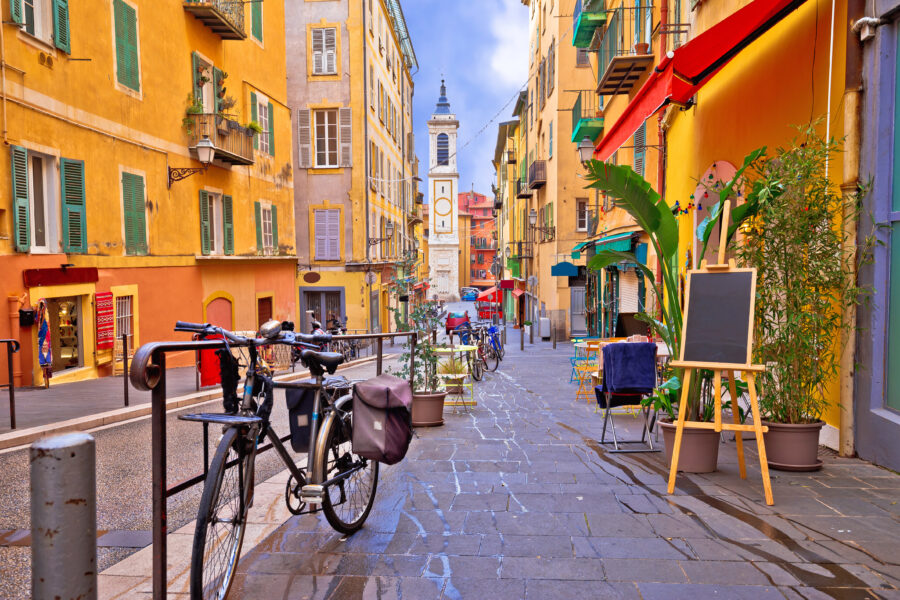
When deciding between Antibes and Nice, travelers should consider the distinct atmosphere, costs, and seasonal factors that make each destination unique on the French Riviera.
Antibes vs Nice: Lifestyle and Atmosphere
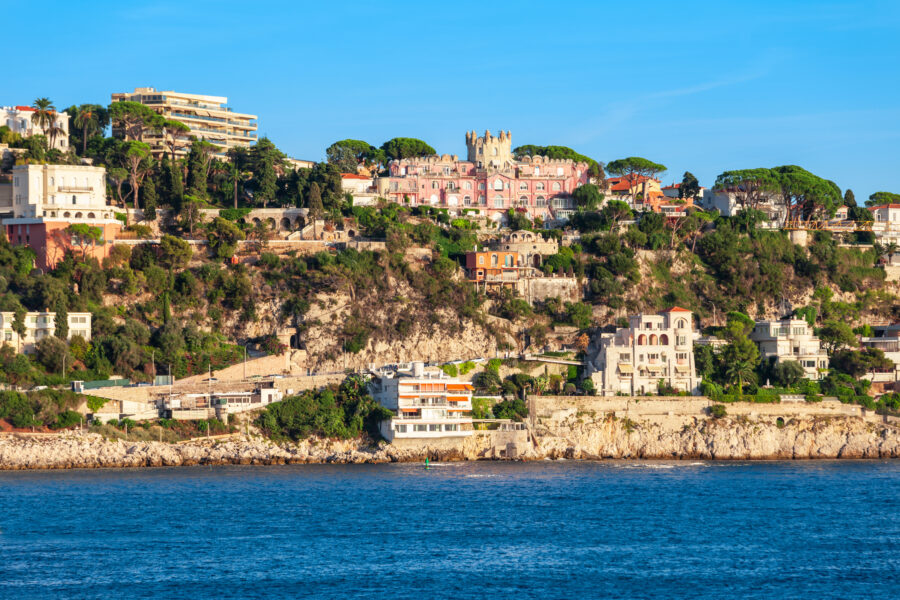
Antibes offers a more relaxed, small-town feel than Nice’s urban energy. This charming coastal town features sandy beaches, a picturesque old town, and a beautiful port filled with luxury yachts. The pace of life feels noticeably slower, especially in the mornings and evenings when day-trippers have departed.
Nice, by contrast, presents a more cosmopolitan environment with its grand boulevards, pebble beaches, and bustling promenade. As a proper city rather than a town, Nice offers more urban amenities, including extensive shopping, dining, and nightlife options.
The English-speaking community is powerful in Antibes, especially around the harbor, making communication easier for English-speaking travelers. This makes Antibes particularly welcoming for those concerned about language barriers.
Cost of Travel and Budget Considerations
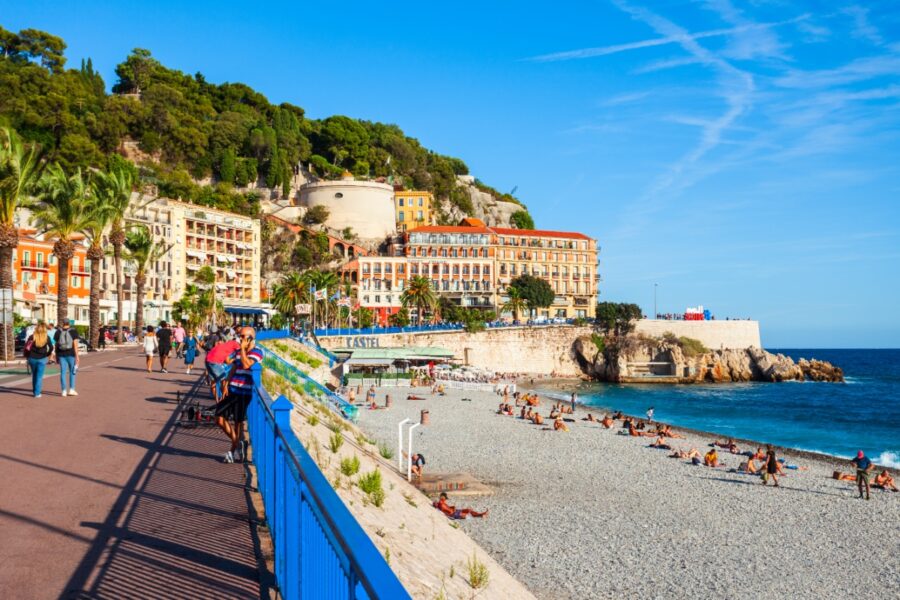
Due to its larger size and greater supply of hotels and rental properties, Nice typically offers more budget-friendly accommodation options. With its comprehensive public transit system and international airport, transportation costs can also be lower.
Dining in Antibes tends to be pricier, particularly in the marina area where upscale restaurants cater to yacht owners and luxury travelers. However, both cities have options for various budgets if you know where to look.
Cost Comparison:
| Expense | Nice | Antibes |
|---|---|---|
| Accommodation | More varied options | Generally pricier |
| Dining | Wide price range | Higher average prices |
| Transportation | Better public transit | More walking-friendly |
| Day trips | Excellent hub | Good, but fewer options |
Best Time to Visit Each City
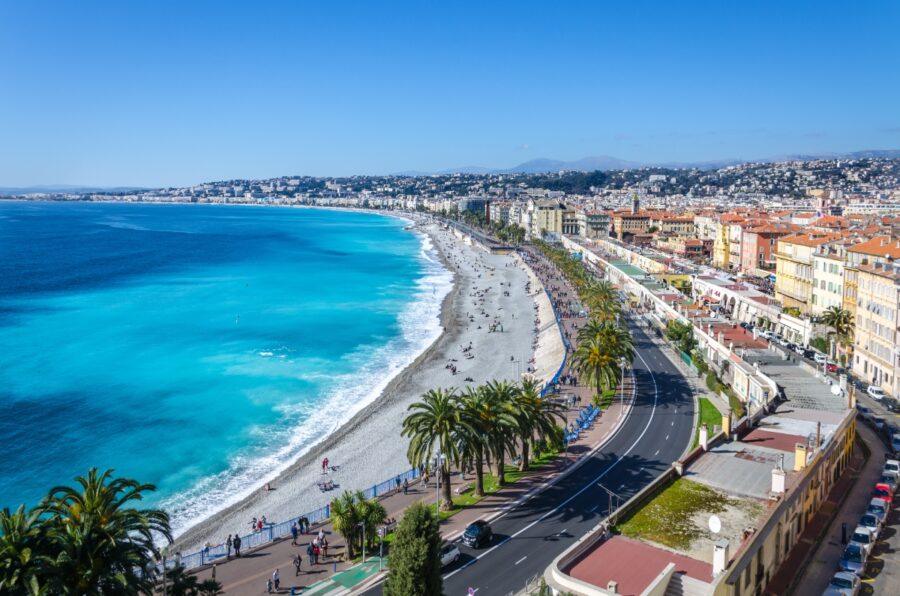
Both destinations shine from April to October, but each has its sweet spots during the year. Nice is delightful year-round, with its famous Carnival in February adding winter appeal. Summer (June-August) brings crowds and higher prices, but the city’s infrastructure handles tourists well. September and October offer a perfect balance of pleasant weather and fewer visitors.
Antibes is more seasonal, with many businesses reducing hours or closing during winter. The town comes alive from May to September, with July and August bringing the liveliest atmosphere and the most tourists.
Spring (April-May) offers a wonderful compromise for both cities – fewer crowds, lower prices, and beautiful Mediterranean weather with temperatures perfect for exploring without summer’s intensity.
Frequently Asked Questions
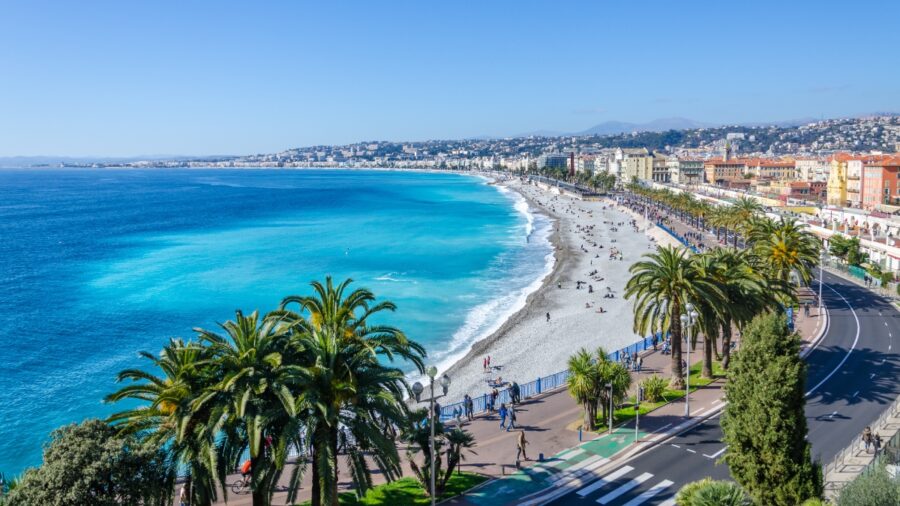
These common questions often arise when travelers decide between Antibes and Nice for their French Riviera vacation. Both destinations offer unique experiences that appeal to different types of travelers.
What unique attractions does Antibes offer compared to Nice?
Antibes boasts sandy beaches, significantly contrasting with Nice’s pebbly shores with large smooth rocks called “galets.” This makes Antibes more comfortable for sunbathing and swimming.
The Picasso Museum in Antibes is housed in the Château Grimaldi, where Picasso worked in 1946. This intimate museum offers a personal connection to the artist you won’t find in Nice.
Fort Carré, a 16th-century star-shaped fort, provides spectacular views of the coastline and mountains. It’s a historical gem that tells the story of Antibes’ strategic importance through the centuries.
How does the cultural vibe of Antibes differ from that of Nice?
Antibes has a more relaxed atmosphere than Nice’s bustling urban energy. The pace is slower, and the town retains more of its traditional French character.
Nice feels cosmopolitan with its international restaurants, shopping, and nightlife. It’s more of a proper city with urban amenities and a diverse population.
The old town of Antibes (Vieil Antibes) has narrower streets and a more intimate feel than Nice’s larger old town. You’ll notice fewer tourists in Antibes, especially in the mornings and evenings when day-trippers have left.
The Cap d’Antibes coastal walk offers breathtaking Mediterranean views away from crowds. This 3.7 km path winds around the peninsula with secret coves and stunning villas.
Marché Provençal is Antibes’ covered market where locals shop daily. Unlike Nice’s larger markets, this one feels more authentic with family vendors who’ve been there for generations.
The tiny beach of La Gravette sits protected inside the town walls. It’s a perfect spot for a quick dip that most tourists miss while visiting the ramparts.
Which destination is preferred for a more authentic French Riviera experience, Antibes or Nice?
Antibes offers a more authentic feel with its well-preserved old town and locals’ hideaways. The town holds secrets that even frequent visitors to the French Riviera might not discover.
Nice has become more international and touristy over the years. While beautiful and historic, parts of it cater heavily to visitors rather than representing everyday French life.
Many French people choose Antibes for their vacations, which speaks volumes about its authenticity. You’re more likely to hear French spoken in cafés and shops than in the more tourist-oriented areas of Nice.
What are the transportation options between Nice Airport and Antibes, and how do they affect travel plans?
Nice Airport is well-connected to Antibes by train, bus, and taxi. The train is often the quickest option during peak traffic hours, taking about 20 minutes from Nice-St—Augustin Station (near the airport).
Bus #250 runs directly from Nice Airport to Antibes for a budget-friendly option. It takes longer (45-60 minutes) but offers scenic coastal views.
Staying in Nice might be more convenient if you plan many day trips, as it’s the region’s transportation hub. However, Antibes is still well-connected enough to serve as a comfortable base.
When planning an itinerary, how can you decide on the ideal length of stay in Antibes to fully appreciate its offerings?
Three to four days allow you to explore Antibes‘ old town, beaches, and museums at a relaxed pace. This gives you enough time to discover the charm beyond the tourist hotspots.
Consider a week’s stay if you plan to use Antibes as a base for exploring other Riviera towns. Visiting Nice, Cannes, Monaco, and smaller villages provides flexibility while returning to Antibes’ tranquility each evening.
First-time visitors often underestimate how pleasant simply wandering the streets of Antibes can be. Build some unstructured time to sit at cafés, people-watch, and absorb the atmosphere.



